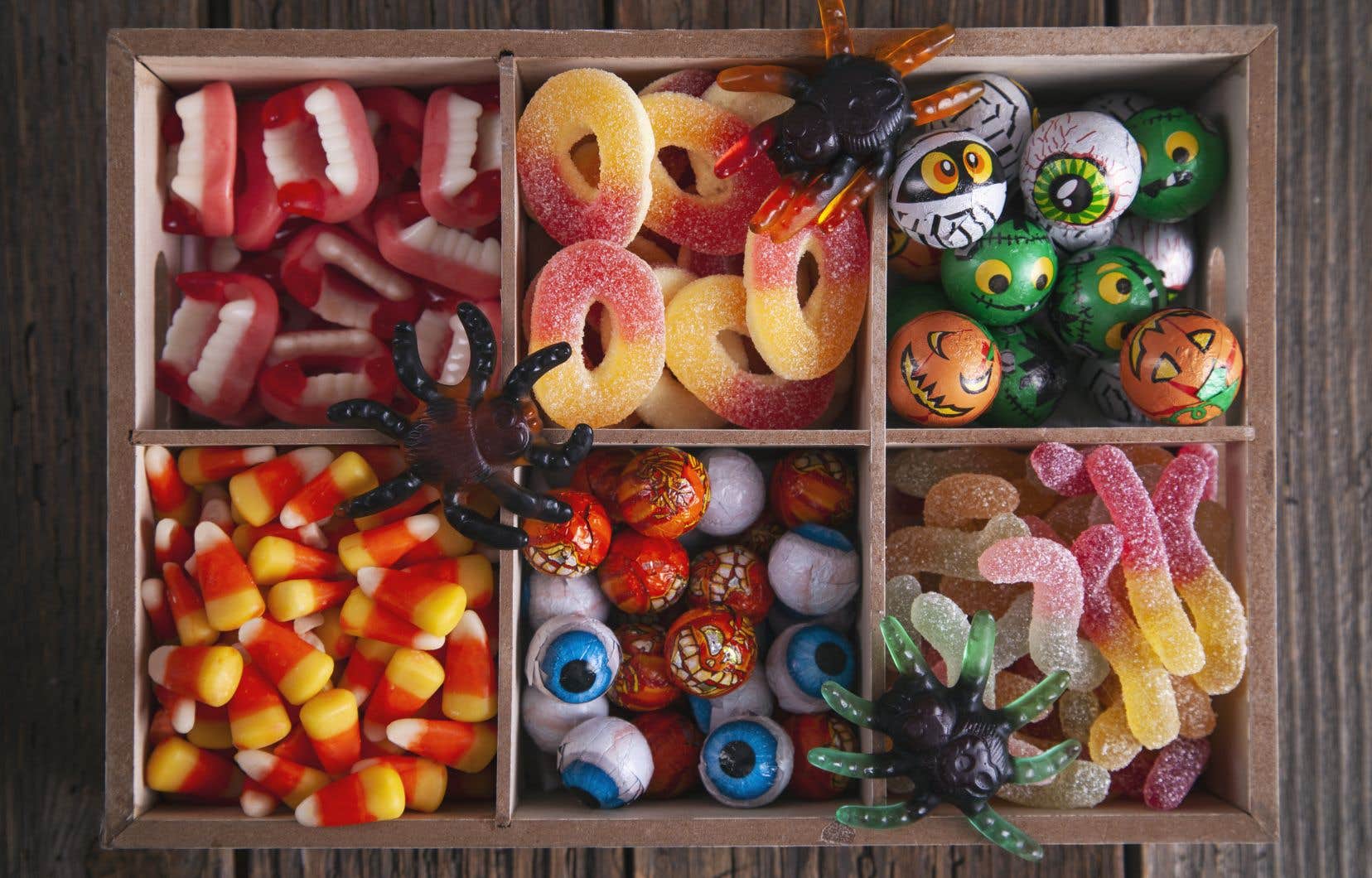This text is part of the special Pleasures notebook
Halloween as we know it today is a watered down version of the All Souls Days celebrated several hundred years ago by different peoples. If dressing up is one of the oldest customs associated with October 31, food has also always been at the heart of the celebrations. As an offering to the afterlife, as an ingredient in esoteric rituals or, more recently, to prevent children from playing naughty tricks: this is why we eat candy on Halloween.
The apple can be considered the first Halloween treat. Among the ancient Romans, it was customary to distribute apples on the 1ster November in honor of Pomona, the goddess of fruit.
However, it is the Irish festival Samhain, inspired by Celtic traditions, which has had the most influence on current festivities. The apple, a fruit considered sacred and magical, was at the heart of several of the rituals practiced by the Druids.
This great festival, celebrated around October 31, highlighted the transition from the light season to the dark season. The villagers went from door to door to collect offerings (including small cakes, nuts and apples) in exchange for a poem for the deceased. Some even went so far as to bury apples underground to feed the dead until they came back to life.
Rooted in tradition, the apple, which is found in abundance at this time of year, naturally established itself as an offering for the first modern Halloweens.
The arrival of sugar
The commercial holiday that is now Halloween has only been celebrated in North America since the 19th century.e century, when the Irish and Scottish settled massively in the United States and Canada, bringing the heritage of this Celtic festival that they knew well.
In Quebec, English-speaking Montrealers were the first to spend Halloween from house to house, sometime in the 1920s and 1930s.
At that time, we mainly offered children fruit or homemade treats (cakes, caramels, popcorn) so that they would not cause damage or damage to our house: the famous “ trick-or-treat “.
It was in the post-war period, when sugar rationing in the United States was lifted, that people really began to embrace commercial candy.
In the 1960s and 1970s, the rest of Quebec also began celebrating Halloween.
Chocolates, jujubes and more
Frédérique Paré and Catherine Forget, the co-founders of the Instagram page Québec Nostalgie, dedicated to the best childhood memories from the 1990s-2000s, know that Halloween is a subject that strikes a chord with their 90,000 subscribers.
The girls remember that when it was time to sort their harvest, back when they were children, they were jubilant at the sight of mini chocolate bars (Aero, Kit Kat, Coffee Crisp), LifeSaver lollipops (” the ones with the big hole in them”) and small bags of gummies (“there were few of them”). They also mention the famous Popeye cigarettes (which are now called Popeye candy sticks), Push Pop lollipops and Ring Pops, Bazooka gum, Nerds, Starburst and Skittles.
What often found its way to the trash? “The Tootsie Rolls, the Sainte-Catherine tires, the Rockets. »
More than candy, children at that time also loved the strategic aspect of collecting candy. “We knew which house gave the most. We even went so far as to use a pillowcase to collect larger quantities of treats,” recalls Catherine.
Frédérique remembers the stories of needles and razors in candy: “At school, there was a lot of prevention on this subject. »
It is also because of several sordid stories, some founded, others not, mainly from the United States, that parents have started to throw away all the homemade treats when sorting out the collection of their children.
The 2010s were marked by the arrival of the turquoise pumpkin, which signals to little monsters with food allergies that a home offers them options adapted to their needs.
More recently, some have started offering “healthy” candies, such as popcorn, sweetened dried cranberries and… applesauce pouches. The circle is complete.
Three sweet shops where you can get old-fashioned sweets
This content was produced by the Special Publications team at Duty, relating to marketing. The writing of the Duty did not take part.
